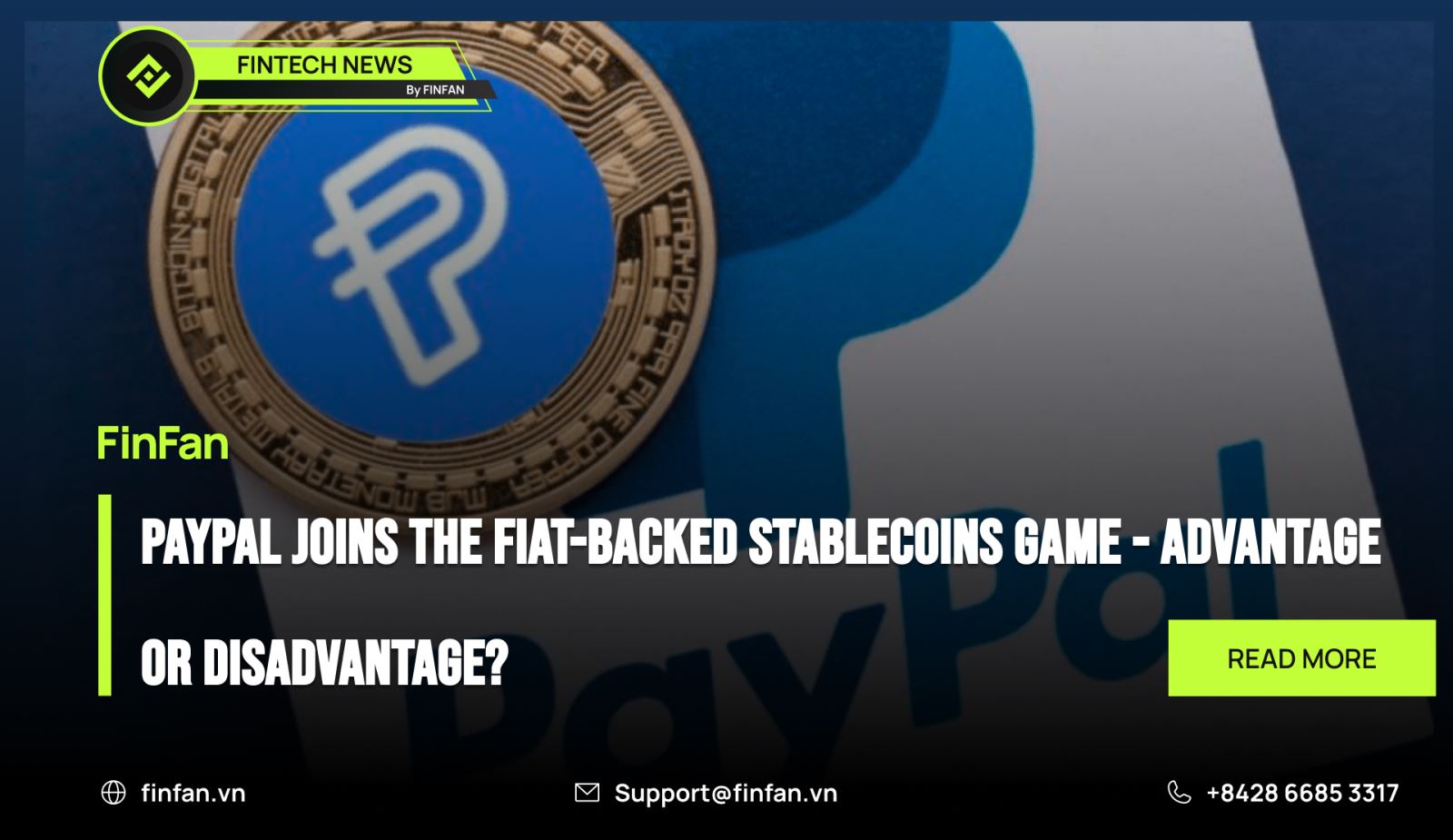PayPal joins the fiat-backed stablecoins game - Advantage or disadvantage?
Recently, according to the prominent crypto market site CoinDesk and on this financial giant's news site, they are starting a project on their first stablecoin dubbed PayPal USD (PYUSD).
What benefits or difficulties will this bring to this company's path to develop the web3 payment segment rather than the traditional payment segment as it was previously?
PayPal joins the fiat-backed stablecoins game - a more ferocious technological war
The evolution of fiat-backed stablecoins
Stablecoins are cryptocurrencies with a price that’s designed to be pegged to crypto, fiat money, or to exchange-traded commodities such as industrial metals or precious metals.
If the reason why Bitcoin was created is to bring a better solution for transactions by addressing all the flaws that ordinary transactions have, such as slow transfer and receipt times, expensive intermediary costs, and inadequate security. Stablecoins are being developed for the same reason, which includes reducing the extreme volatility of cryptocurrencies like Bitcoin and others.
In 2014, BitUSD and NuBits were the first stablecoins to debut, and they provided excellent support for this issue. However, these coins aren’t fiat-backed stablecoins that were well known until Tether issued this kind of money with USDT in 2015.
Fiat-backed stablecoins are stablecoins that are pegged to the value of real-world currencies, such as the U.S. dollar or euro, and backed by reserves in that currency. USDT is a good example of fiat-backed stablecoins pegged to the value of USD.
A more ferocious technological war will come
Although it is new to the game, PayPal has lofty goals:
- Becoming a bridge between fiat money and web3 money for customers, businesses, and developers,
- Creating U.S. Dollar denominated, redeemable and transparent,
- Focusing on education, understanding and adoption of digital currencies.
Advantages that help PayPal to boost market competitiveness
- A huge data of customer
These huge goals are supported by the fact that the corporation currently serves over 1 billion customers globally and owns a diverse payment infrastructure, including payment gateways and e-wallets.
Moreover, as this payment mechanism has been integrated into numerous e-commerce channels, PayPal's customer base now includes merchants, wholesalers, and retailers on a global scale in addition to regular customers.
- Diverse ecosystem
Furthermore, PayPal's ecosystem is incredibly diverse, spanning all customer journeys from purchase to final payment.
The benefit of being too successful in the fiat market will also considerably contribute to PayPal's forthcoming steps when this firm will be the leading technological company in directly converting fiat money into crypto and vice versa. There is no need to go via an intermediary, and P2P transactions on exchanges carry significant risks.
- Receive trust from many large investment funds
Another advantage is that PayPal is a big technical company, and every major investment fund will be eager to participate in this company as it develops its own stablecoin.
Additionally, PayPal and the New York-based cryptocurrency financial services company Paxos Trust jointly publicized this initiative. Paxos Trust is a well-known company in the industry, and it is this company that has combined with Binance to issue BUSD. The collaboration of these two renowned businesses on this project will increase value in the eyes of investors.
Disadvantages that can hinder PayPal's upcoming goals
- There are a lot of competitors, but the bulk of users only have a few options for holding and exchanging stablecoins.
According to the latest survey from CoinGecko 2023 on the number of crypto users holding stablecoins and using them in payments, more than 80.3% of users hold USDT.
This shows that users have used and trusted this coin for a very long time (more than 8 years since its launch), although, in today's market, there are many competitors that want to take over the market share of this stablecoin field.
Dominating the fiat payments industry may not benefit PayPal if it does not have an effective customer outreach plan in place to educate customers about the no intermediary money transfer between fiat and crypto that PayPal wishes to develop.
- The cryptocurrency market is complex and easily manipulated
Issuing its own stablecoin not only demonstrates its ambition to bridge the fiat and crypto markets but also serves as a stepping stone for PayPal to enter the cryptocurrency market.
However, unlike the fiat currency market that has existed for hundreds of years, the cryptocurrency market is still a new market, where its capitalization is not too large and is very likely to be dominated by certain individuals or organizations and the risk is very high (the bankruptcy case of FTX - the company that once had the top 2 crypto exchange in the world is a typical example).
The bankruptcy of FTX itself was also caused by an affiliate company founded by themselves and also active in the crypto field, Alameda Research. As for PayPal, it is even more difficult when they have to ensure a balance between two financial markets that are completely different in their nature and legality.
If it doesn't handle a number of legal and financial procedural issues well in both segments, it is likely that PayPal will suffer the same losses as FTX when it is accused of market manipulation and unfortunately defaults.
In short, PayPal's first release of its own stablecoin marks a new turning point for this giant in the financial market. Although there are many obstacles waiting for this company to solve, with many years of experience developing in the financial market, hope PayPal will find the next solutions to their problems and step by step. achieve its purpose of being the bridge between the fiat and cryptocurrency markets.

